Film Editing
What is it ?
It is the process of joining various shots of a movie production to create meaningful sequences and eventually bring a movie into life.
Why is it critical?
Without film editing, a movie would just be a collection of random visual sequences.
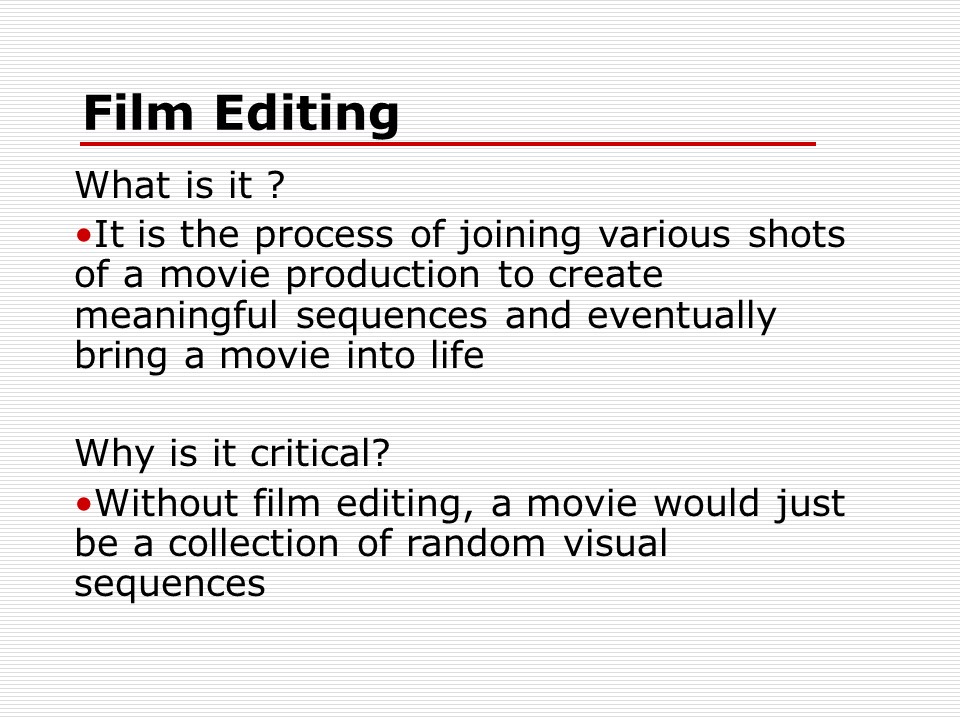
What makes Editing unique?
Every other aspect of movie making such as acting, direction, script writing, recording and film photography have been adapted from other forms of art.
This makes film editing as something special and singular to the art of movie making.
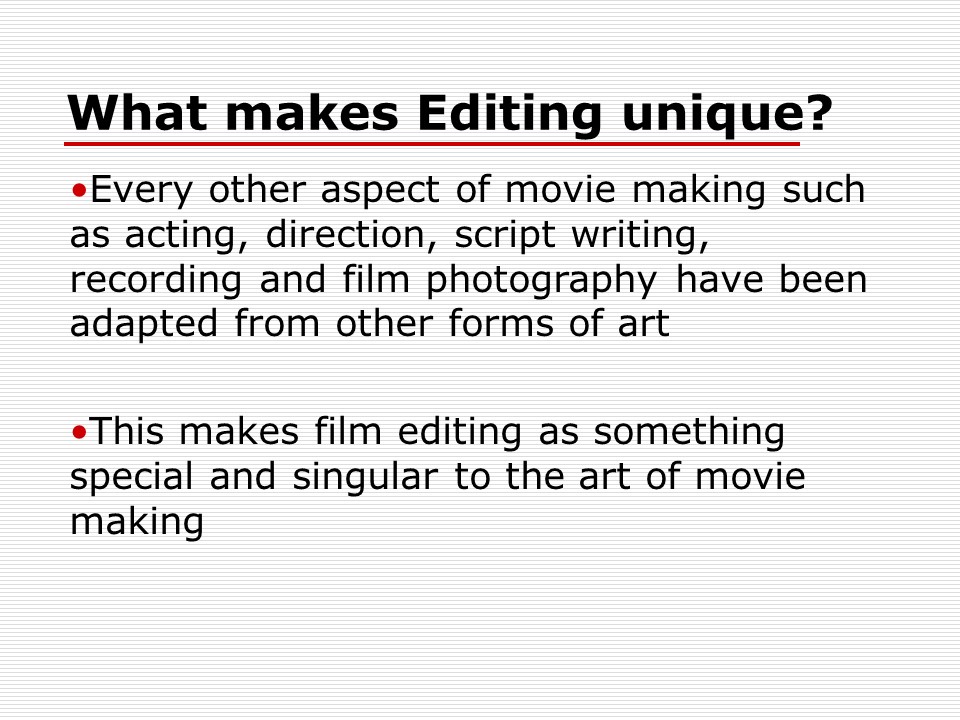
Chronicles of Film Editing
The early days of film editing saw editors splicing up film manually and joining segments together using a tape.
The first phase of editing usually would be done on the positive copy (workprint), so as to prevent any potential damage to the original negative of the film.
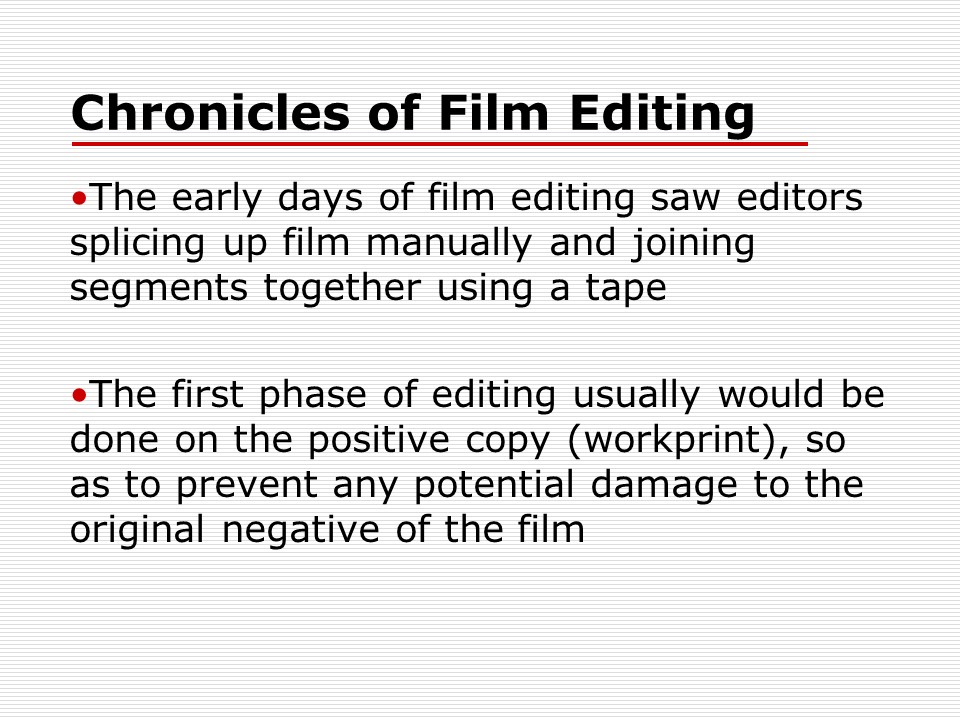
Film Editing Equipment
A vertically-oriented film editing system known as Moviola was initially used to view and edit films, until the 1970s.
This was later replaced by horizontal flatbed editing suites such as Steenbeck and KEM, which are still used for film restoration and archive since the risk of film damage is minimal.
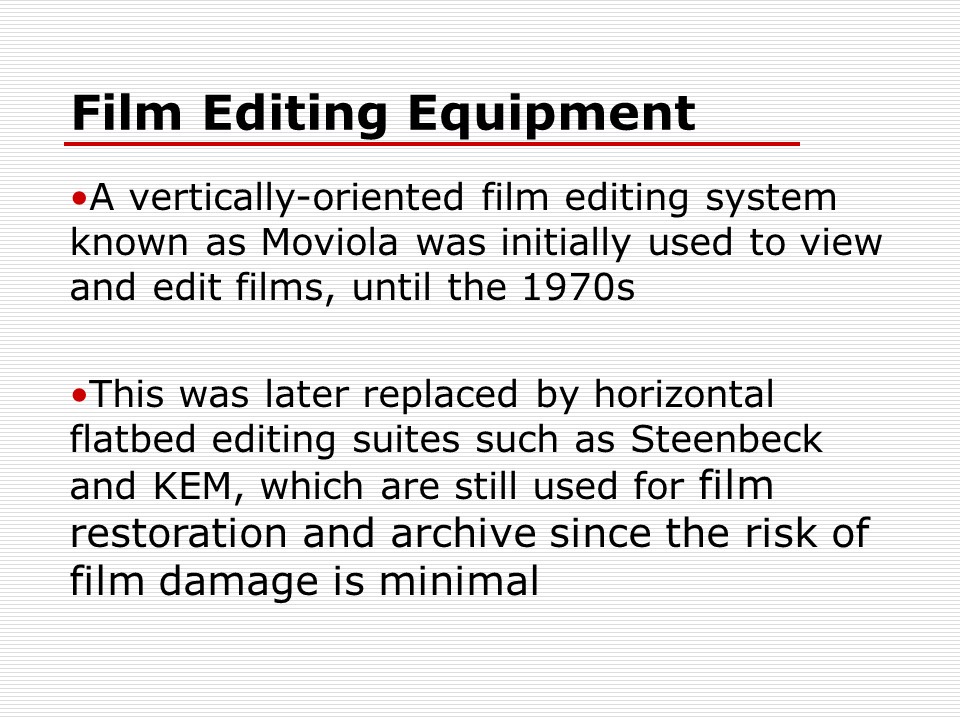
Evolution of Film Editing
- The advances in digital technology led to the introduction of non-linear editing methods.
- The film is converted into digital data and stored on a storage media for random access.
- The stored video and audio are then edited on a computer, thereby eliminating the possibility of film damage.
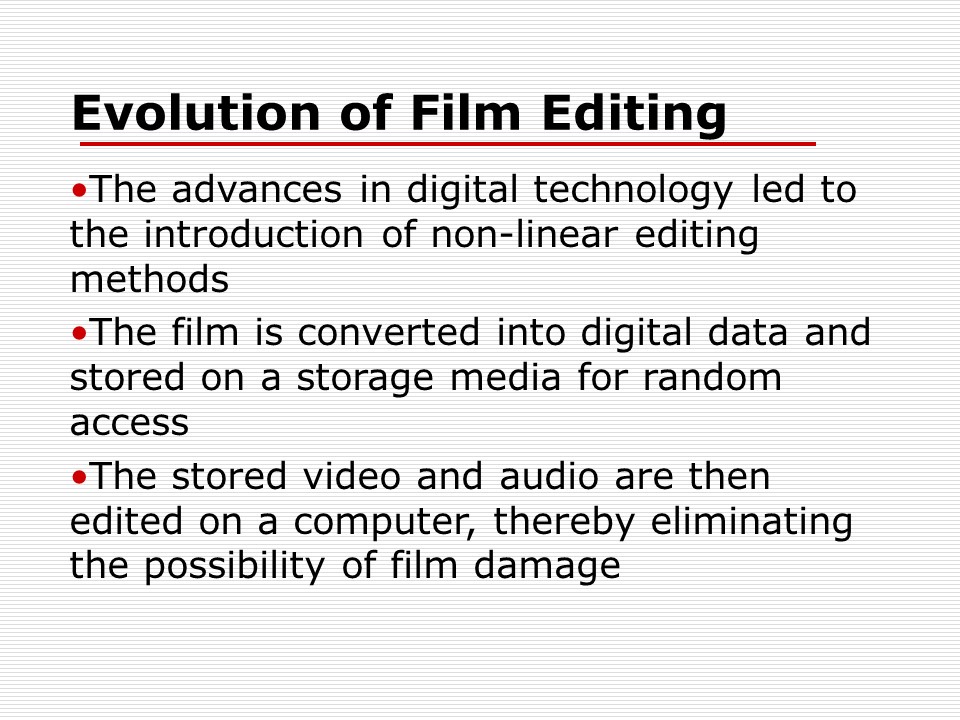
Film Editing Software
The editing process is done using a variety of computer software such as:
- Adobe Premiere,
- Apple Final Cut Pro,
- Avid Media Composer,
- Pinnacle Studio Media Suite,
- Ulead Media Studio Pro,
- Windows Movie Maker.
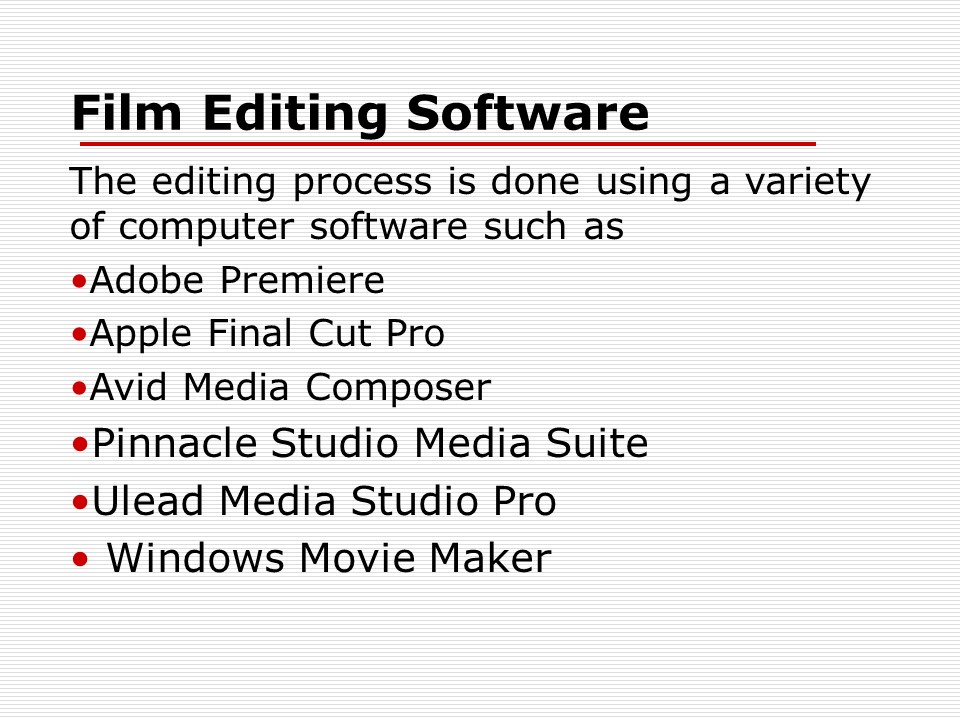
Film Editing Stage I: The Editor’s Cut
The editor gets a sense of the director’s expectations and vision as the film progresses. Based on further exchange of ideas between the editor and director, the former edits the daily shot raw footage.
The editor eventually finishes up with an assembly cut, which is reviewed and edited further by the director.
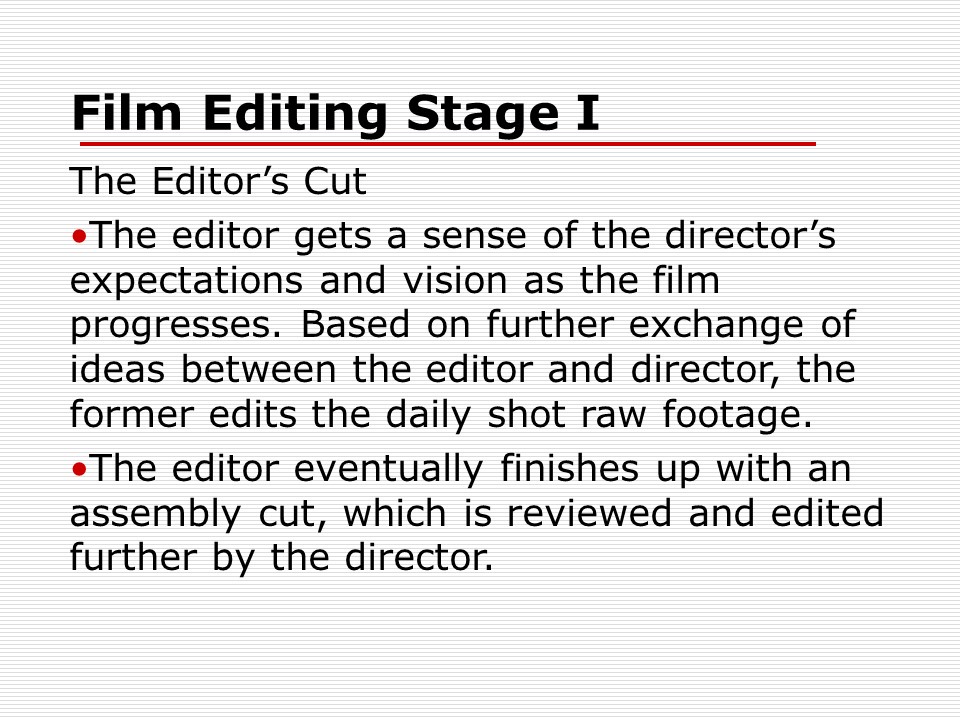
Film Editing Stage II: The Director’s Cut
When the filming of the movie reaches completion, the director dedicates complete time and attention towards editing. The editor and director work hand-in-hand to fine-tune plot holes and missing segments.
The director’s cut, usually shorter then the editor’s cut, is submitted for the production studio’s approval.
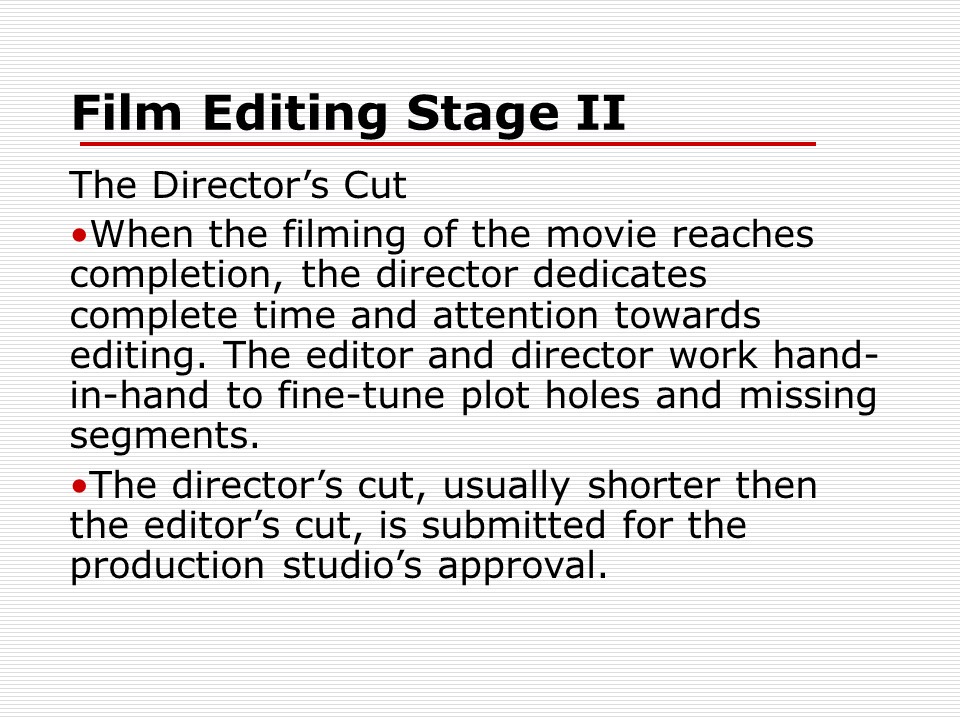
Film Editing Stage III: The Final Cut
This version of the film is what the general audience views. The director’s cut is often shortened by cutting off footage to fit the production studio’s objectives.
The director’s cut version which includes missing footage is sometimes released several years later on home video.
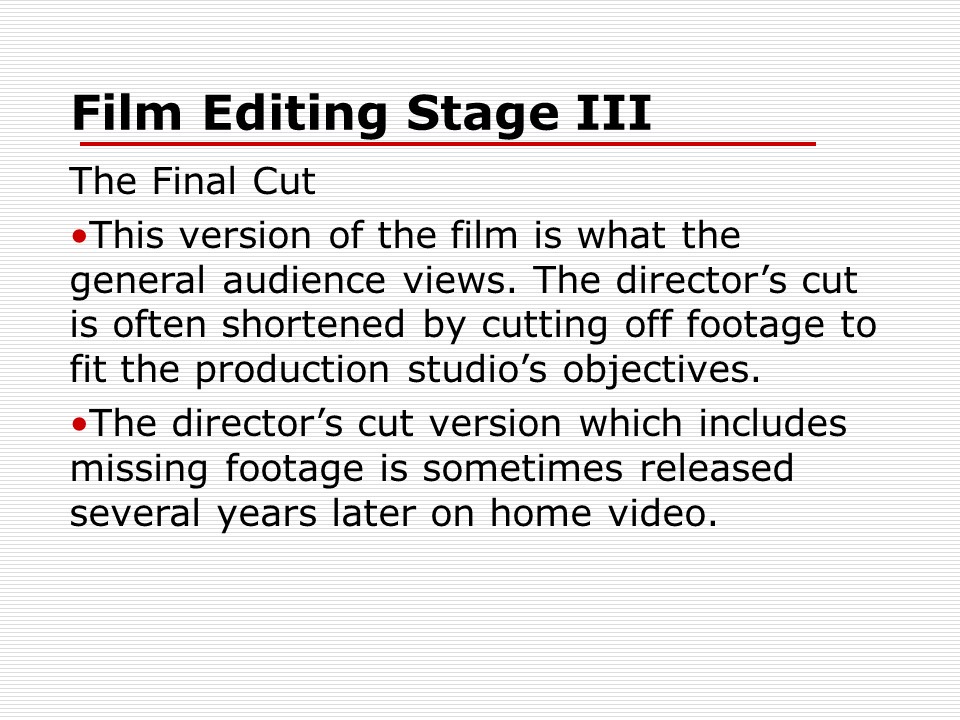
Issues and Conflicts
Studio Intervention
Producers often impose strict limits on the running duration of the film, which may pose artistic and creative challenges to film editors.
Continuity Errors
Editors are criticized for lack of continuity when the film suffers from mismatched placement of props and missing action between shots. A keen eye for detail is crucial to overcome such flaws.
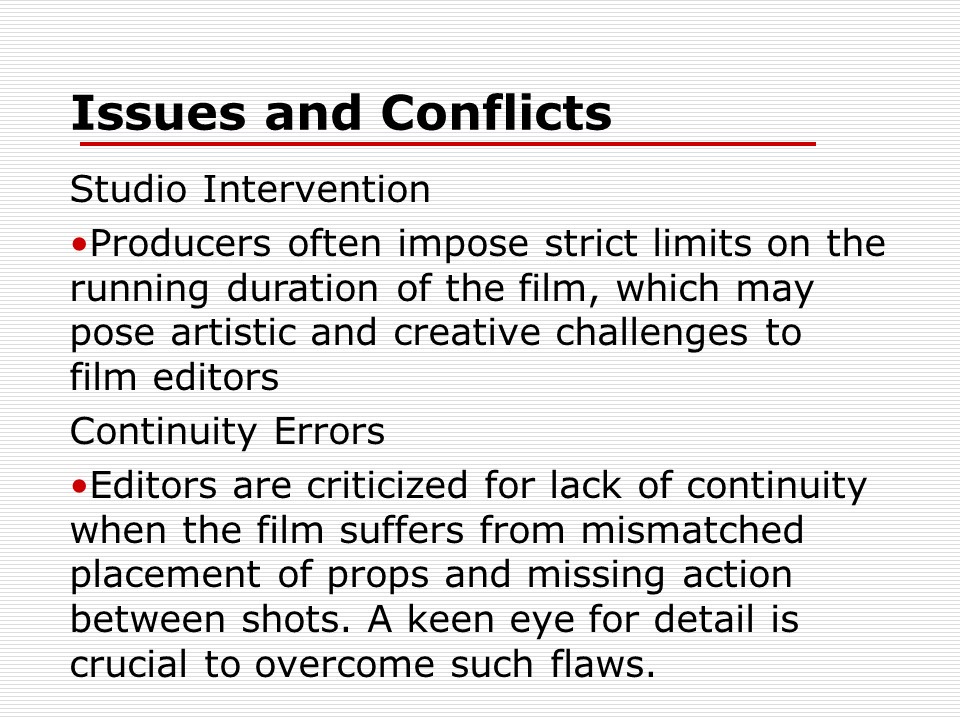
Continuity Cutting
Continuity cutting is the conventional form of editing, wherein the film sequence flows seamlessly and cuts are not noticeable to the viewer.
It is the standard norm for Hollywood cinema and the editor’s job is seldom noticeable.
Cutting on action, 180° Rule and Eyeline match editing techniques are often used in continuity cutting.
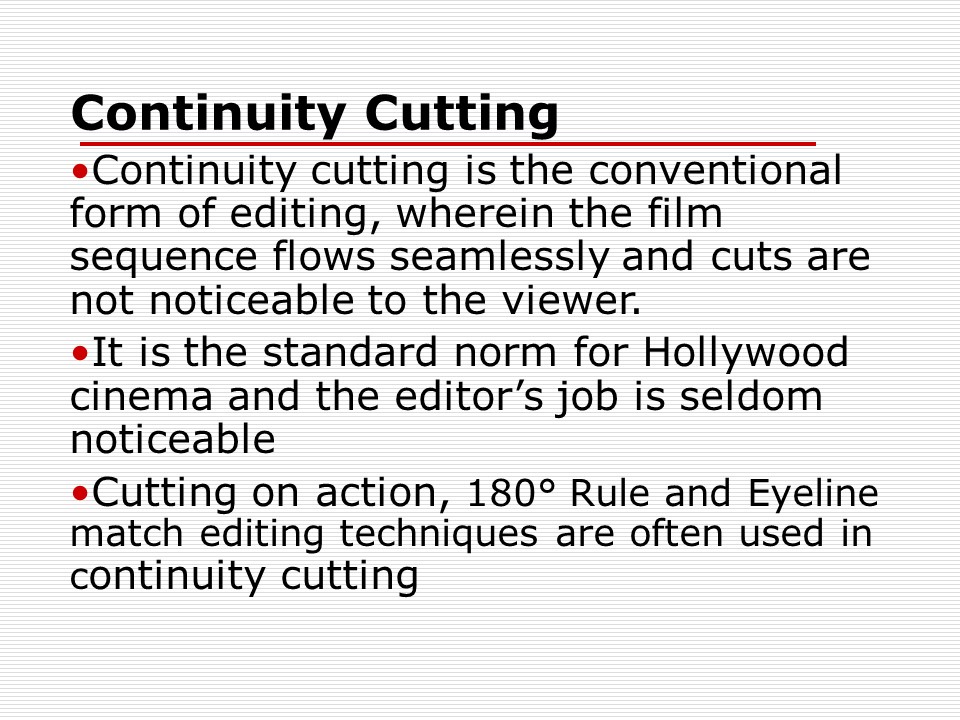
Editing Techniques
Eyeline match
When a character starts looking off-screen, a cut is made to an object to suggest that he/she is looking at it.
180° Rule
Two characters in a scene should always have the same left/right relationship to with respect to one another.
Cutting on action
A shot is made to match with the previous shot’s action and energy, thereby giving it an illusion of continuity and thereby making up for minor continuity errors between shots.
Establishing shot
A shot of a particular setting is shown in the beginning to reinforce the theme of the scene.
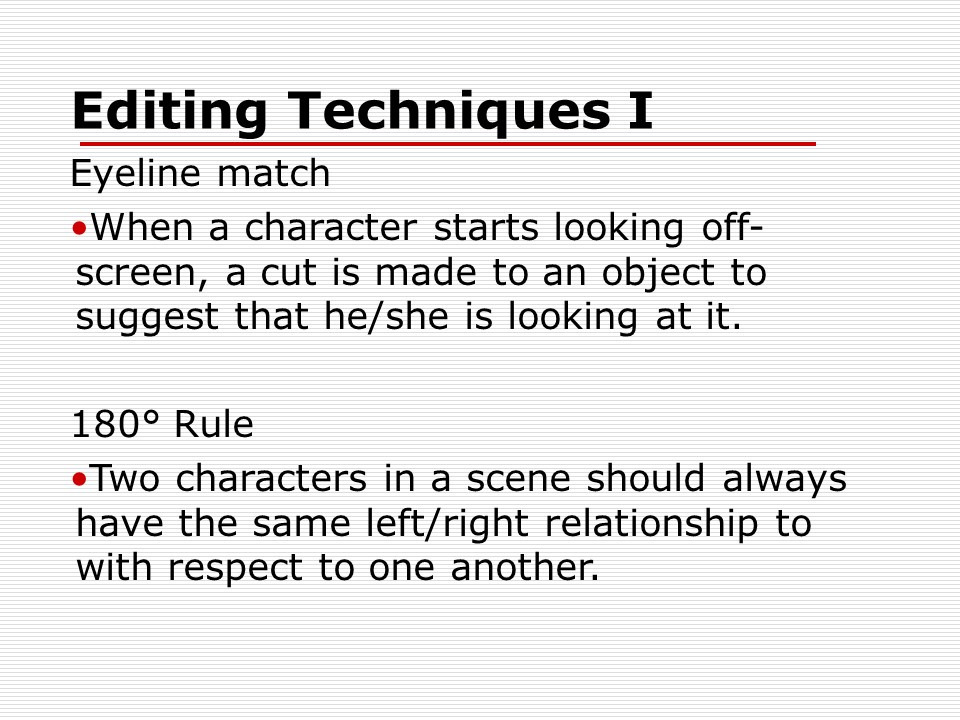
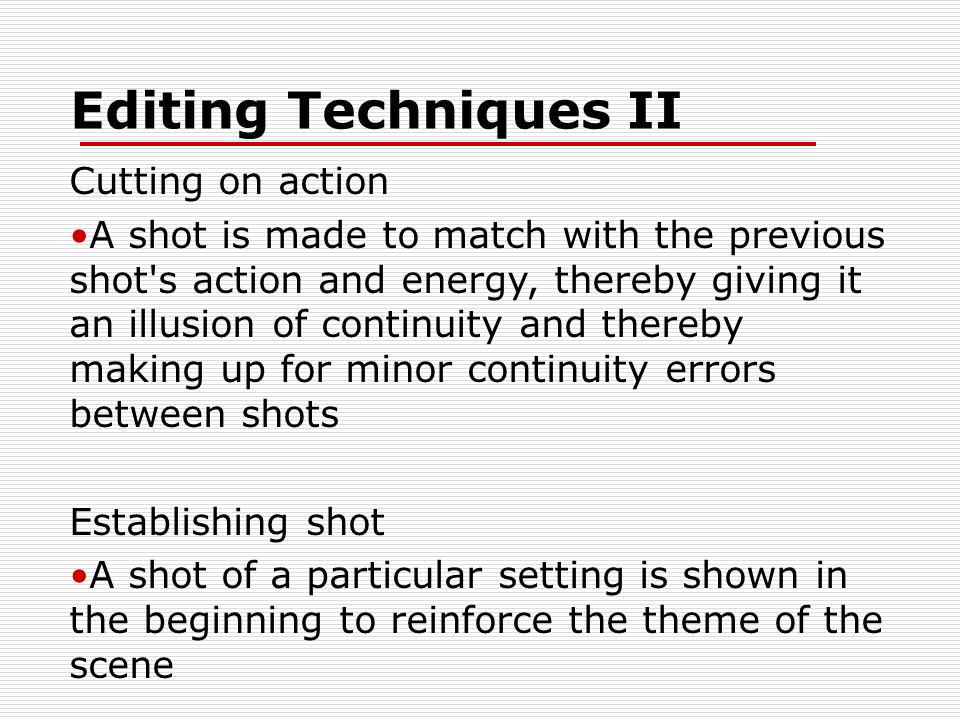
Montage
Montage is a method to summarize a narrative by sequentially putting together series of small shots.
A suitable background score is played to make it more engrossing and add weight to the sequence of events.
It is usually employed to indicate passage of time.
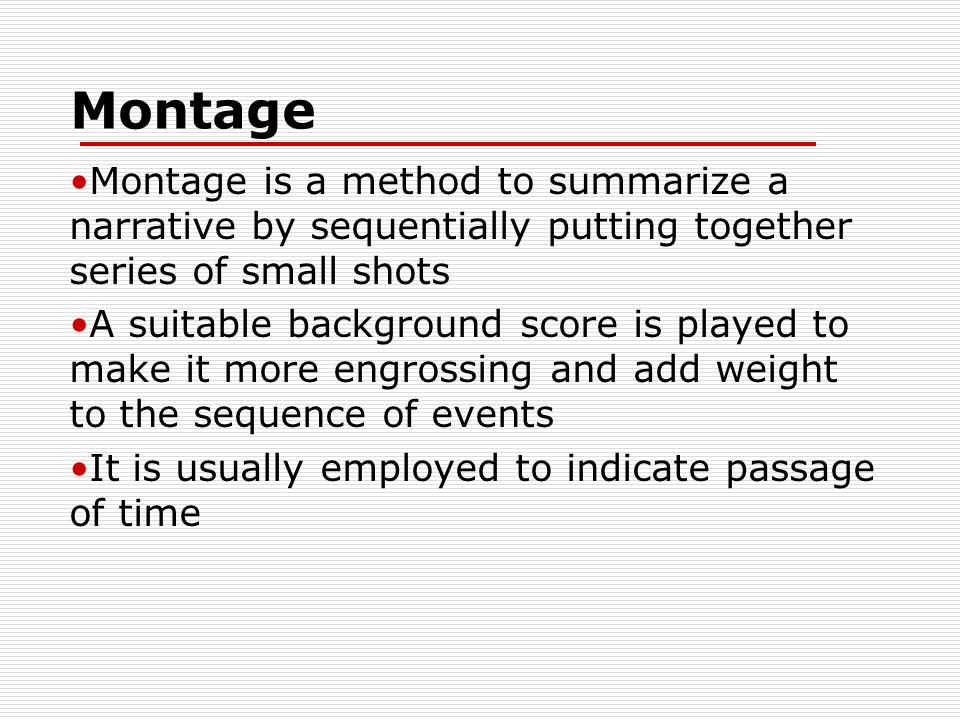
Soviet Montage
Soviet Montage is a method of joining different shots to deduce an entirely new meaning that would have not come in being had they remained as separate shots.
Editing is of paramount importance to this style of moviemaking.
Tonal, rhythmic, metric and intellectual montage are some of the methods employed.
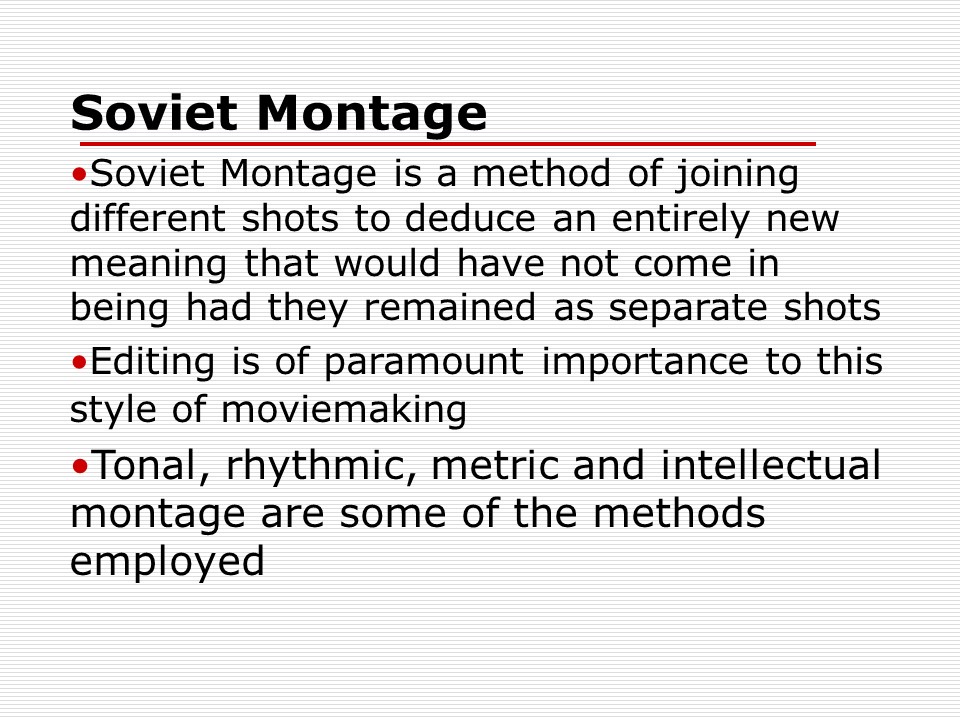
Editing Terminology
Dissolve
A visual transition in a scene when the end of a shot is overlapped with the beginning of the next shot.
Fade
A momentary transition between scenes as the shot fades out to black with no picture and again fades in into the next scene (Learner.org).
Iris
A circle opening up or closing down on a shot. This editing technique was used during bygone days of silent cinema.
Wipe
A bar traveling across the screen which pushes one shot off the screen and pulls the next shot in. This is another technique used preceding the 1950s era.
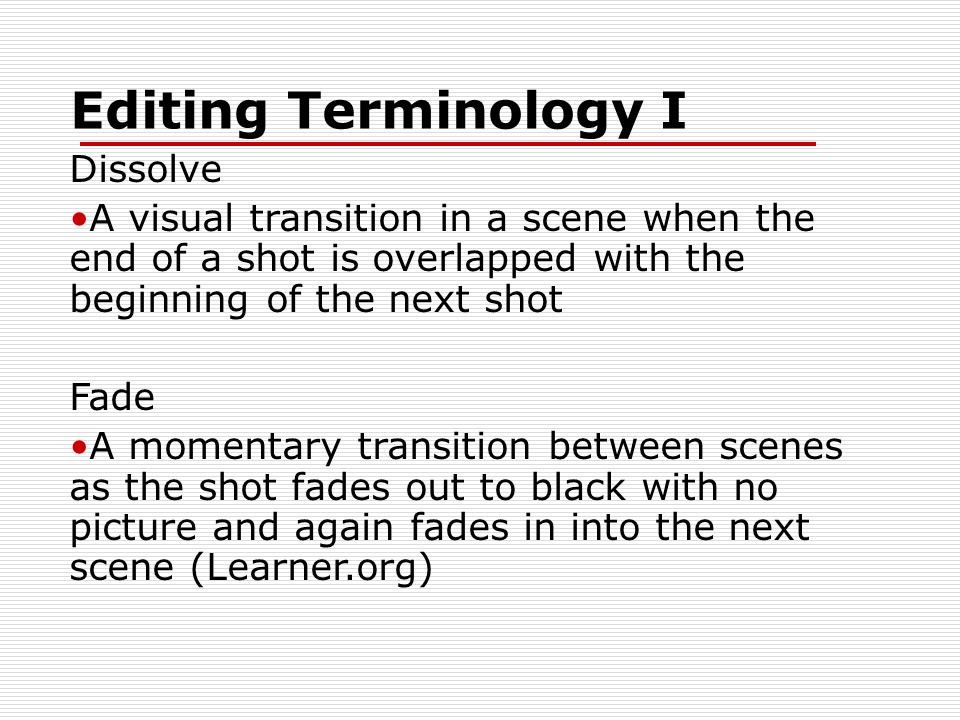
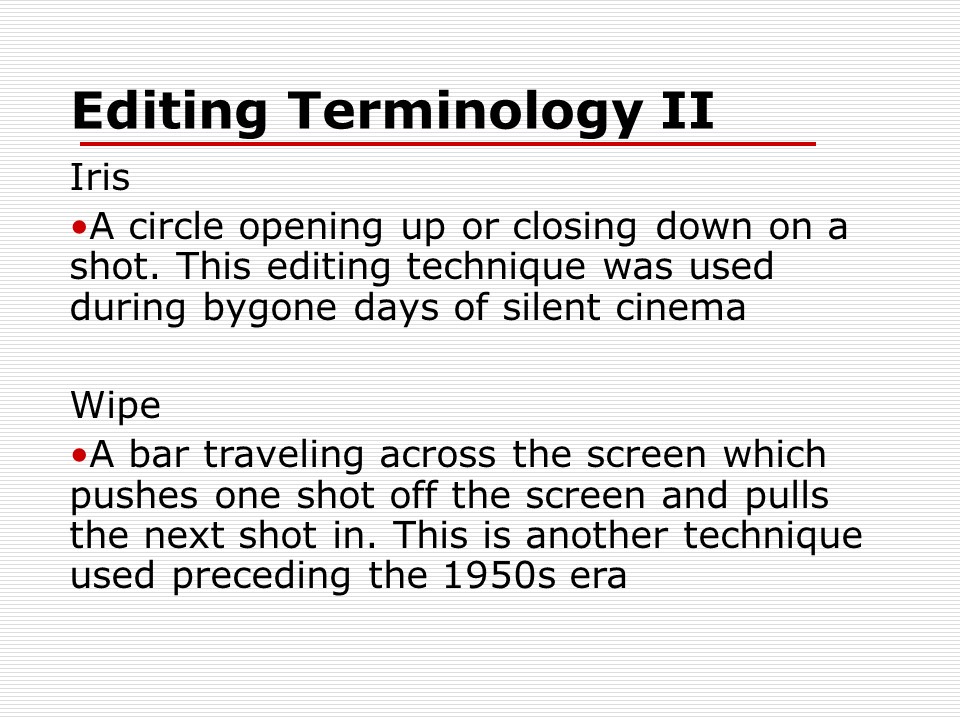
6 Traits of a Good Shot
- True to the emotion of the script;
- Advances the plot;
- Rhythmically connected to the movie flow;
- Connects eye-trace, movement of audience focus and location;
- Follows stage line, plane of screen and two dimensional (Murch);
- Abides three-dimensional continuity.
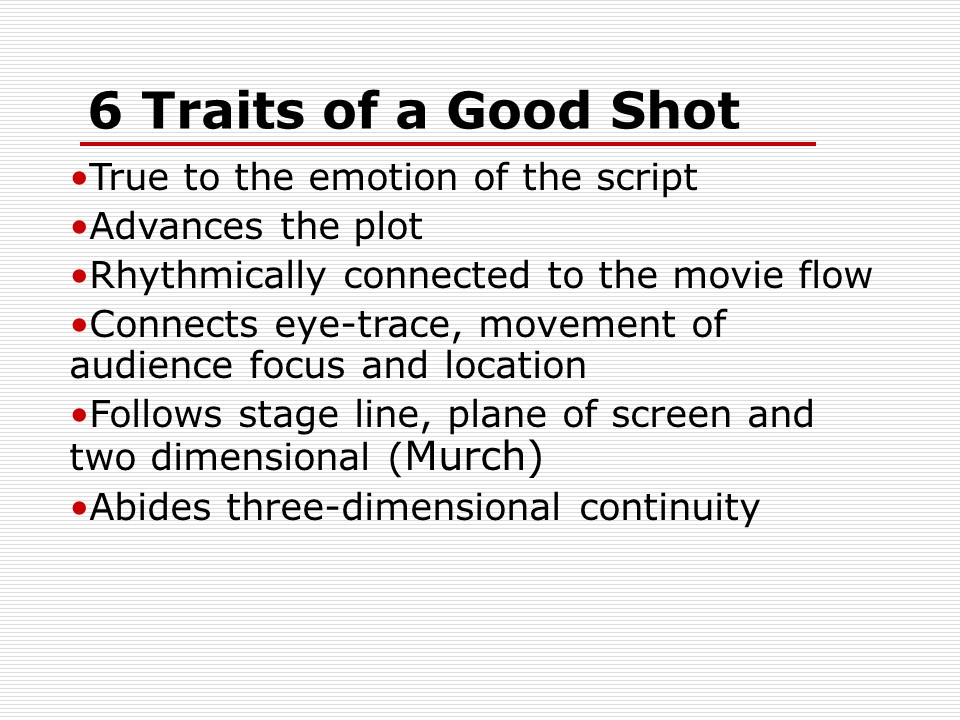
Film Editing Guidelines
- Place yourself in the audience’s shoes;
- Any scene should start and end with action going on;
- Its better to make a longer cut when facing a dilemma (Dmytryk, 23);
- The scene should never lack substance (Dmytryk, 145);
- Cut whenever you blink.
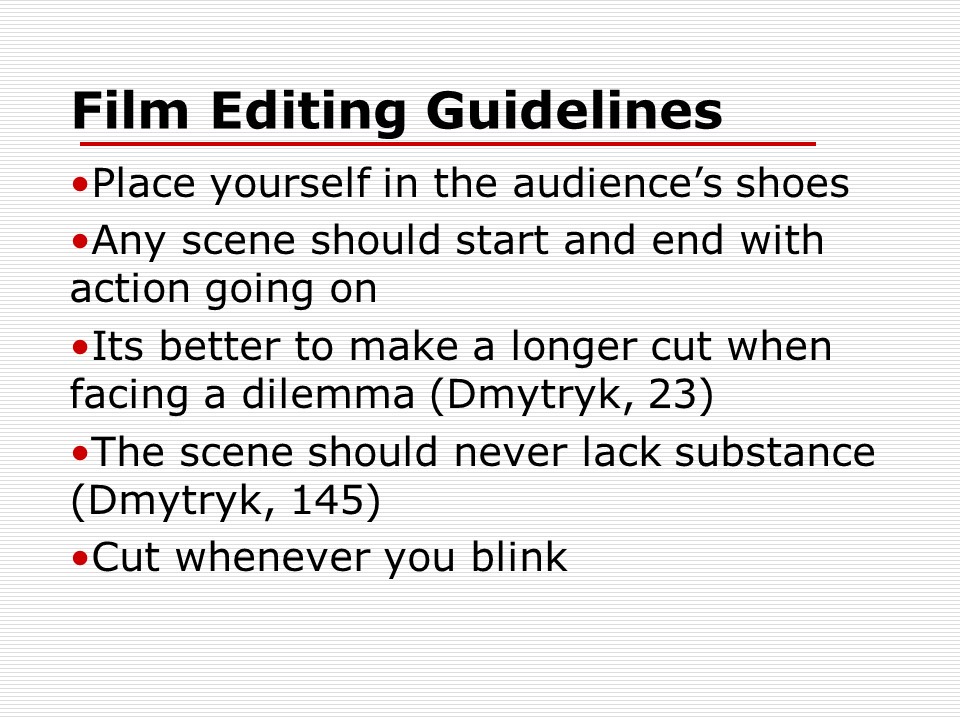
Legends in Film Editing
- Sergei Eisenstein was a forerunner of Soviet Montage during the 1920s.
- Stanley Kubrick was an outstanding film editor who stayed clear of staple Hollywood editing conventions.
- Orson Wells, in spite of constant studio interference, made consistently well-edited movies.
- Walter Scott Murch won an academy award for editing for Apocalypse Now.
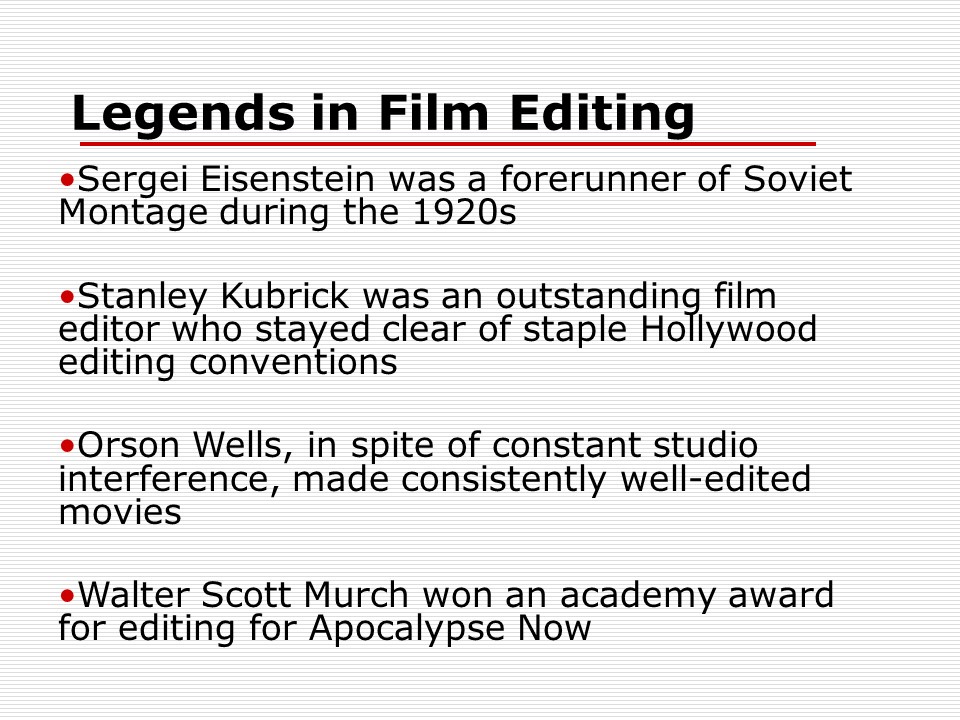
Reference
- Dmytryk, E. (1984). On Film Editing: An Introduction to the Art of Film Construction. Boston: Focal Press.
- Learner. Film Editing Glossary. Web.
- Murch, W. (2001) In the Blink of an Eye: a Perspective on Film Editing. Silman-James Press.